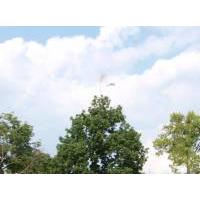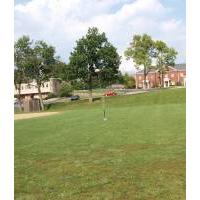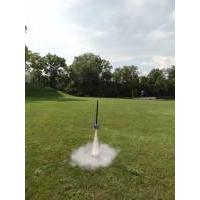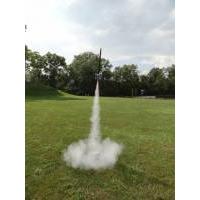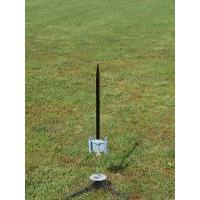Estes Star Wars Darth Vader's Tie Fighter
Estes - Star Wars Darth Vader's Tie Fighter {Kit}
Contributed by Bill Eichelberger
| Construction Rating: | starstarstarstarstar_border |
| Flight Rating: | starstar_borderstar_borderstar_borderstar_border |
| Overall Rating: | starstarstar_borderstar_borderstar_border |
| Published: | 2015-09-26 |
| Manufacturer: | Estes  |
 Brief
Brief
A seldom seen bird from the last Star Wars craze, the Darth Vader Tie Fighter is one of those rockets that you look at and say "No way that can fly right." Well, based on my experience, you might be right.
Components
- Darth Vader Tie Fighter plastic model
- plastic flight coupler
- 18mm engine mount
- 2 black BT-50 body tubes
- tube coupler
- PNC-50YR nose cone
- clay weight
- shock cord
- parachute
Construction
Despite what initially looks to be a fairly complex build, the DVTF actually builds fairly quickly. I started and finished it the night before the first launch. Construction is handled with a combination of Testors plastic cement and a wood glue of your choice. Instructions are typically decent and if followed, allow for a quick and easy build.
Finishing
Finishing can be as detailed as you'd like. I was in a hurry to have this ready to fly the next day, so I skipped this step, but I've seen others with the details painted as they were intended and they look very cool. I didn't have much faith in the rocket, so I didn't feel the need to put any extra time in on it. There are no decals.


Flight
For the first flight I used an Estes B4-2, which is one of the engines suggested in the instructions. The instructions claimed that this motor would take the rocket to 144 feet, which is pretty close to what I think it got to. B6-4 Field is fairly cozy, so I wanted to start things off with a low level flight just to see if it would actually leave the rod. As a matter of fact, it left the rod fairly nicely, and actually appeared to be flying as advertised before there was an "anomaly" (i.e. the plastic flight coupler uncoupled,) and the whole mess started skywriting. At the time I thought that would be it, and retired the rocket for a couple of years until I decided to re-glue the parts and try again.
Re-glued and with improved nose weight, I tried it again in the summer of 2015. This time I decided to go with the C6-3 because, let's face it, the thing is a pig and not likely to overfly B6-4 Field. This flight looked good in the viewfinder, but the skywriting once again began before the camera burst mode had recycled itself. It looked like it was going to hit the ground under power, which surely would have ended its flying career, but the ejection charge fired about 20 feet off the ground and the chute had time to fill before disaster, and entertainment, struck. Hard to imagine this bird on a C6-5. I decided again that it would be the retirement flight, but much like The Who, this bird has had multiple retirements.
For the third flight I swapped out the kit nose cone for another that I had heavily weighted for another rocket that was destroyed by CATO earlier in the year. This flight also eventually ended up unstable, but first climbed to an altitude more in keeping with the package claims. At the field I would have sworn that would be the last flight, but now I'm not so sure. This is starting to become a quest and I'm worried.
Summary
Pros: No one flies these things. Can be had cheap if you pay attention.
Cons: Curly flight path. Can be expensive if you aren't paying attention.
Other Reviews
- Estes Star Wars Darth Vader's Tie Fighter By Matt Gillard (January 20, 2007)
Another Star Wars rocket, which is basically a plastic model with a rocket tube sticking out of it. As with most Star Wars rockets, it's not the most aerodynamic of shapes and requires a significant amount of nose mass for stability. Darth Vader’s Tie Fighter comes in several plastic parts - the "probe" which is two body tubes; a two-part nose cone; a connector; and a Star Wars ...
 |
 |
Flights
Sponsored Ads
 |
 |


